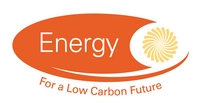Projects
Projects: Projects for Investigator |
||
| Reference Number | EP/X038254/1 | |
| Title | Carbon Fibre Axle (CaFiAx) | |
| Status | Started | |
| Energy Categories | Energy Efficiency(Transport) 10%; Not Energy Related 90%; |
|
| Research Types | Basic and strategic applied research 100% | |
| Science and Technology Fields | PHYSICAL SCIENCES AND MATHEMATICS (Metallurgy and Materials) 40%; ENGINEERING AND TECHNOLOGY (Mechanical, Aeronautical and Manufacturing Engineering) 60%; |
|
| UKERC Cross Cutting Characterisation | Not Cross-cutting 100% | |
| Principal Investigator |
Dr M Johnson No email address given Mechanical, Materials and Manufacturing Engineering University of Nottingham |
|
| Award Type | Standard | |
| Funding Source | EPSRC | |
| Start Date | 01 November 2023 | |
| End Date | 30 April 2025 | |
| Duration | 18 months | |
| Total Grant Value | £506,513 | |
| Industrial Sectors | Transport Systems and Vehicles | |
| Region | East Midlands | |
| Programme | NC : Engineering | |
| Investigators | Principal Investigator | Dr M Johnson , Mechanical, Materials and Manufacturing Engineering, University of Nottingham (99.999%) |
| Other Investigator | Professor S Li , Faculty of Engineering, University of Nottingham (0.001%) |
|
| Industrial Collaborator | Project Contact , Network Rail Ltd (0.000%) Project Contact , Rolls-Royce PLC (0.000%) Project Contact , Lucchini RS SpA (0.000%) |
|
| Web Site | ||
| Objectives | ||
| Abstract | The aim of the CaFiAx project is to minimise the mass of railway axles using CFRP to reduce track damage and train CO2 emissions.Heavy weight trains cause high CO2 emissions and track damage. The trend, however, is towards increasing rail vehicle weight, requiring greater energy for propulsion and more intense loading on the rails. The 2 bogies of a rail vehicle account for 41% of the total train mass (~40 tonnes). Two wheelsets (1 axle/2 wheels) are mounted in each bogie frame. Importantly, the wheelset (~1000 kg) is in direct contact with the rail. Gaps and irregularities in the rail (or flats on the wheel) initiate impact damage, like hammering, as the wheels roll across the track surface.In Europe, more than EUR25 B/yr is spent maintaining and renewing the 220,000 km of track infrastructure. Within the UK, Network Rail (GB Railways) maintains 20,000 miles of track and requires the Train Operating Companies to pay track access charges. The heavier the train, the higher the charge. Network Rail recognise the maintenance savings possible from a lightweight wheelset and offer their technical support to the project (Network Rail Letter of Support (LoS)). Additionally, infrastructure repairs cause track closures, passenger delays and greater road congestion.Few attempts have been made to lightweight the wheelset. Best practice for steel axle lightweighting is to bore the centre. Lucchini RS, an international wheelset manufacturer, report a mass of 200 kg for a bored railway axle. Further mass reductions are possible only by using a lower density material. The CaFiAx project introduces a CFRP railway axle that is at least 65% lighter than steel. Changing the axles on the Class 220 Voyager fleet (34 off, 4 car configuration) from steel to CFRP would save the Train Operator over £5.6 M/yr in track access charges alone.A CFRP tube is made by rolling CF-epoxy "prepreg" fabric around a cylindrical mandrel. Each layer (60+ for a railway axle) is a ply of between 0.25 to 0.50 mm thick. The ply comprises carbon fibres typically oriented at 0 deg (parallel), +/-45 or 90 deg (perpendicular) to the axis of the tube. Once cured, the plies can no longer be separated and become a composite laminate. The fibre directions control the axle stiffness and dynamic properties. Notably, a CF-epoxy laminate has ~3.5 times the specific fatigue strength of steel and titanium while being 75% and 60% less dense than steel and titanium, respectively.Success of the CaFiAx project relies on fulfilment of 4 objectives:- Objective 1: Create TALON, a computational tool for the design optimisation of tubular composite axles and shafts.- Objective 2: Produce a dataset of fatigue strength properties for CFRP tubes under 4-point reverse bending conditions.- Objective 3: Produce a dataset of bond strength properties for joining metallic collars to CFRP tubes.- Objective 4: Produce a full-scale finite element model of a mass optimised, CFRP railway axle using TALON synergistically with a commercial finite element analysis software package (Abaqus).CaFiAx addresses the fundamental needs of a rotating shaft: strength requirements are met through design (Objectives 1, 2 and 4) and elements attachment is achieved for power transmission (Objective 3). These essential requirements must be met before addressing higher order needs such as impact, rough handling, dynamic behaviour, cost, manufacture, alternate materials and others.The EU recognise the need for a lightweight wheelset. They proposed and funded, NEXTGEAR: WP3-Wheelset of the Future (NEXTGEAR: 881803). Continued Horizon Europe funding is expected. Importantly, the CaFiAx project team provided all concepts and the structural composite design to NEXTGEAR and are well placed for further, UK exploitation. Lucchini, a NEXTGEAR partner, realise this and support CaFiAx (Lucchini LoS), as do Rolls-Royce who see application opportunities for aeroengine gearboxes (Rolls-Royce LoS). | |
| Publications | (none) |
|
| Final Report | (none) |
|
| Added to Database | 05/07/23 | |



